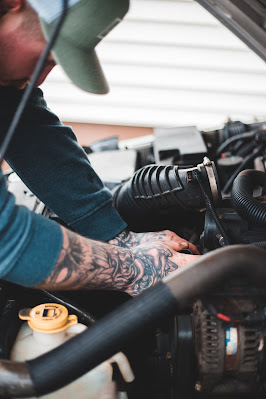A Complete Resource for Purchasing Brake Pads
Please change your brake pads as soon as possible. This is a crucial precaution that must not be disregarded. Maintaining effective brakes is crucial to avoiding accidents with other cars and going off the road. Brake pads should be inspected once a year to make sure they are still performing their job, but if you see any signs of wear and tear, you should get new ones right once!
The meaning of brake pads
 |
| Photo by Erik Mclean |
You can't stop your automobile without the brake pads. They're affixed to the rotors of the wheels and help the brake caliper execute its job of slowing or stopping the car. Brake pads, like tires, wear out and require replacing at varying intervals (40-80k miles, depending on how often you drive, how you drive, and how old your existing pads are).
Timing of brake pad replacement
Since brake pad wear is gradual, there is no hard and fast mileage threshold at which they must be replaced. However, if you see any of the following signs, it is time to get new brake pads:
Fail to brake adequately
Indicators of brake pad wear include a vehicle that stops more slowly than normal or fails to stop at all when the brakes are applied. If your brakes make a grinding noise when you apply pressure, your front brake pads are likely worn out and need replacing. As the pads wear down, the noise will increase in volume and frequency. This is quite risky and may ruin your rotors.
Too much wear on the brake pads reduces the friction they create, making the brake pedal seem soft. It's possible that, even when you're fully depressing the pedal, the brakes won't activate. If you have an anti-lock braking system (ABS), this might trigger a warning or perhaps make the brakes stop working altogether.
How come I need to maintain my brake pads?
You need to be very cautious while dealing with brake pads since they are an essential safety feature of your vehicle. Brake pad wear indicators are conveniently located around the wheel rim and may be seen during regular tire and brake inspections. When the green region of the indicator becomes worn down to a thin line, you know it's time to get your brake pads inspected. If more than the green region is worn away, the brakes won't have enough surface area to latch onto when you press the pedal.
In the event of an unexpected halt, it is quite probable that your brake pads saved the day. If you don't give them the once-over to make sure they're in good shape, you can end up with a situation which might cause a serious crash.
When and how should I replace my brake pads?
You should replace your brake pads at regular intervals, just as you would your oil and tire pressure. Make it part of your regular maintenance schedule of inspecting them every time you fill up with gas. It's important to replace brake pads as soon as possible if you notice any wear. It's smarter to take preventative measures now than to wait until your brakes fully fail.
When it comes to brake pad replacement, this is the most crucial information
That you shouldn't put them off any longer. It may be too late by the time you notice warning signs, and your automobile may not have as much stopping power as usual. Replace them when you have some free time to make sure you are secure.